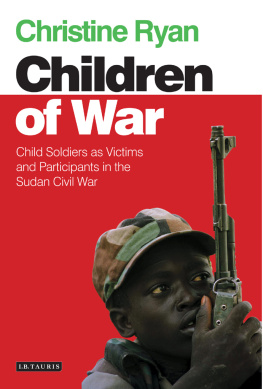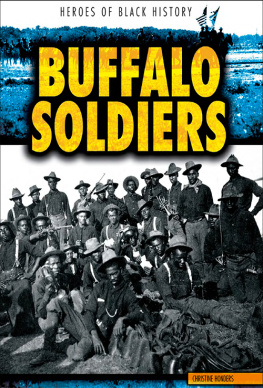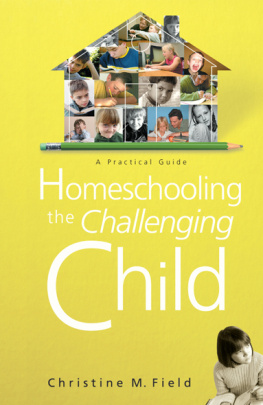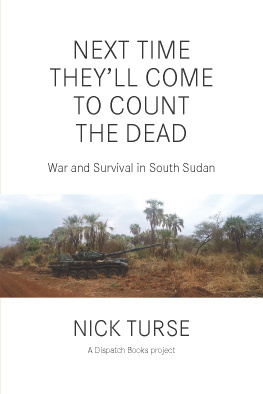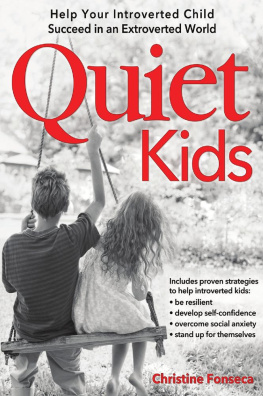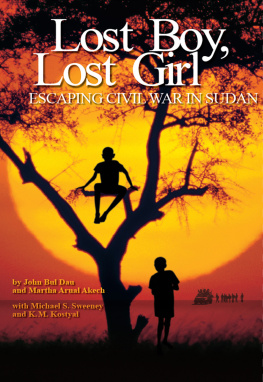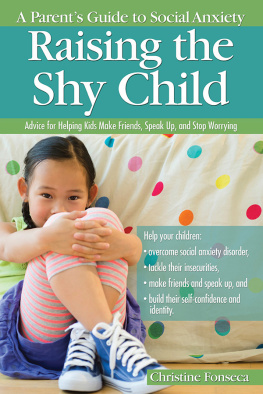Published in 2012 by I.B.Tauris & Co Ltd.
6 Salem Road, London W2 4BU
175 Fifth Avenue, New York NY 10010
www.ibtauris.com
Distributed in the United States and Canada
Exclusively by Palgrave Macmillan
175 Fifth Avenue, New York, NY 10010
Copyright 2012, Christine Ryan
The right of Christine Ryan to be identified as the author of this work has been asserted by the author in accordance with the Copyright, Designs and Patent Act 1988.
All rights reserved. Except for brief quotations in a review, this book, or any part thereof, may not be reproduced, stored in or introduced into a retrieval system, or transmitted, in any form or by any means, electronic, mechanical, photocopying, recording or otherwise, without the prior written permission of the publisher.
International Library of African Studies, vol. 37
ISBN 978 1 78076 017 9
eISBN 978 0 85773 225 5
A full CIP record for this book is available from the British Library
A full CIP record for this book is available from the Library of Congress
Library of Congress catalog card: available
Typeset by Newgen Publishers, Chennai
INTRODUCTION
The military recruitment of children (under-18s) and their use in hostilities is a much larger phenomenon that still takes place in one form or another in at least 86 countries and territories worldwide.
On the ground, the consensus would appear to be reflected most clearly by a decrease in the number of conflicts in which children are directly involved from 27 in 2004 to 17 by the end of 2007... this downward trend is more the result of conflicts ending than the impact of initiatives to end child soldier recruitment and use.
The increased use of child soldiers has been marked as a new phenomenon of modern warfare by non-governmental organisations (NGOs) and bodies of contemporary literature. This rise has been particularly observed in Africa, where the increase of child soldiers has been attributed to both the shifting military landscape, notably small arms proliferation, and to the widespread poverty found in most African countries. Dire social conditions have been further compacted by the onset of AIDS, which has also shifted the demographic landscape by decreasing the able-bodied adult population. This book focuses on child soldiers by considering one specific fighting faction and conflict that has been recognised for its wide use of child soldiers: the Sudan Peoples Liberation Army during the Second Sudanese Civil War (19832005).
Even if children are not involved in war as a child soldier, they are involved as a junior citizen and could be even more vulnerable. The acceptance of children as a part of war brings up the issue of their lacking a role in political involvement and peace resolution. These preliminary questions below serve as themes to this book and it is not my intention to answer them directly; however, I hope to offer suggestions as to how they may be approached and inform necessary academic debate on these issues.
If child soldiering is an accepted/normal part of African warfare then why do some children risk their lives to avoid military participation?
If there is no element of coercion to conscription, then why do some children choose to enlist in armed forces?
Can the use of child soldiers be seen as a positive individual political step of involvement (an imperfect beginning perhaps?), or is the use of child soldiers negative however you look at it?
The debate over child rights on an international level began in 1924 with the Declaration of the Rights of the Child by the League of Nations.
Much of the debate surrounding the issue of child soldiers focuses on the age of conscription, which has put into question the lines that are drawn for what constitutes an adult or child. It is argued that since the boundaries to age groups are formed on a cultural basis rather than scientific, the limit of 18 years of age outlined by the UN is from a Western perspective. In order to test the validity of such standards put forward by the UN and international organisations that are determined to stamp out the problem of child soldiers, further research and informed debate is essential.
Child Soldiers
The humanitarian community has defined a child soldier as one involved in conflict under the age of 18.
A debate within the issue of child soldiers is the claim that there has been an increased use since roughly the end of the Cold War.
It is suggested that lightweight weapons are the cause of the increased use of child soldiers.
Another motivation identified as causing the participation of child soldiers is self-protection. The military serves as a way to access resources and of securing personal safety from rebel groups or government forces.
It is important to look at the transitional elements that created the context for war. Specifically, the need to look at the conditions in which children were living prior to the outbreak of conflict. Violence prior to a conflict includes such things as slavery, human rights abuses, discrimination, and exploitation. It could be argued that the international community ignores the exploitation and political violence that children existed in before a conflict.
Evidence that children have historically participated in conflict in many capacities contradicts the assertion that child soldiers are a new phenomenon. The historical account of childrens participation in war is not meant to justify their participation in modern-day warfare. In generalising historic examples, this could result in ignoring the possibility that although there can be found historic examples of child soldiers, the extent of the participation might be considerably more in modern conflicts.
The conceptualisation of the child soldier across cultures and through time must also be explored and at times the occupational and honourable status that being a child soldier has had. In demonstrating how modern conceptualisations of childhood have mythologised the past role of children in conflict, this may also overshadow any differences between the military roles children have played in conflicts over the last 300 years and those of the last two decades.
Regarding the simplification of the issue of child soldiers and the international-law perspective, Duffield notes that the Declaration of the Rights of the Child allows humanitarian groups to civilise the South by passing judgement on how a country treats its children. The issue of taking away childrens rights is not limited to the child soldier nor contained within the declaration of war.
An aspect of the international law perspective that is challenged by academic debate is that emphasising a childs weak position actually encourages them being targeted. As in the case of Sudan, children were presented as innocent bystanders used for liberal peace agendas. Although children were used for political rationales, their political agency was not brought into the liberal debate.



